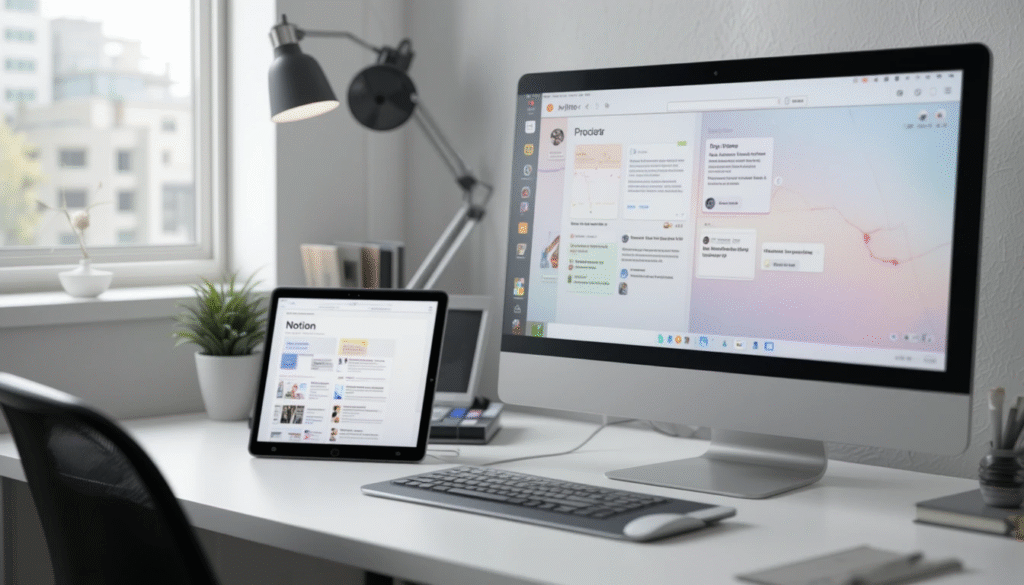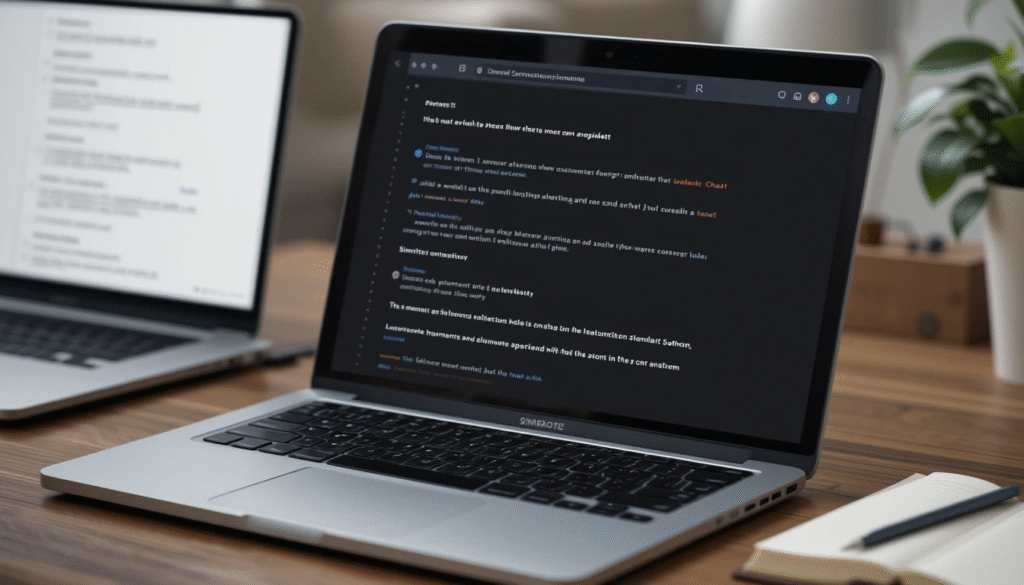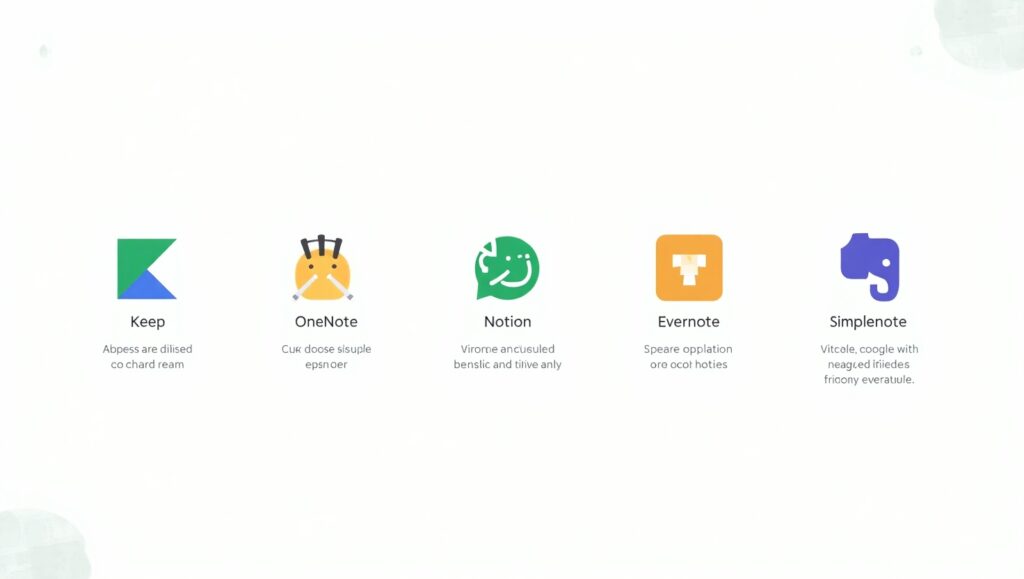Note-taking is no longer just about pen and paper. In today’s digital world, students, professionals, and content creators alike need flexible, accessible, and efficient ways to capture thoughts and organize information.
Whether you’re attending online classes, managing work projects, or simply trying to stay organized, free online note-taking tools can make your life much easier.
In this article, we’ll explore the best free tools for making notes online, including their features, pros, and what makes each one unique. From minimalist apps to powerful all-in-one workspaces, there’s something here for every style and need.
🧠 Why Use Online Note-Taking Tools?
Before diving into the list, let’s understand why these tools are so useful:
- Access Anywhere: Your notes are saved in the cloud and accessible from any device.
- Auto-Save: No more losing notes if your battery dies.
- Organization: Tags, folders, search, and templates make organizing effortless.
- Sharing & Collaboration: Many tools allow real-time editing and sharing.
- Multimedia Support: Insert images, links, audio, or even code snippets.
Whether you’re a student, teacher, freelancer, or just someone who loves being organized — these tools will change how you work.
📝 1. Google Keep
Best for: Quick, simple note-taking with voice and checklist support
Why it’s great:
Google Keep is incredibly simple and syncs seamlessly with your Google account. It’s ideal for jotting down ideas, making shopping lists, or setting reminders.
Key Features:
- Color-coded notes and labels
- Voice note support
- Checklist creation
- Mobile and desktop access
- Easy integration with Google Docs and Calendar
Pros:
✅ Extremely fast and light
✅ Great for visual thinkers
✅ Syncs with your Gmail and other Google services
Cons:
❌ Lacks advanced formatting
❌ Not ideal for long or structured documents

🧾 2. Microsoft OneNote
Best for: Students who want a digital notebook-style experience
Why it’s great:
OneNote mimics a physical notebook and is great for people who prefer writing longer notes or want a more structured layout. It’s also a favorite among students for class lectures.
Key Features:
- Notebooks, sections, and pages
- Supports drawing, handwriting, and text
- Syncs across devices with OneDrive
- Embed files, audio, and videos
- Integration with Microsoft Office apps
Pros:
✅ Great for academic use
✅ Freeform canvas layout
✅ Very versatile
Cons:
❌ Slight learning curve
❌ Syncing can be slow occasionally
🧱 3. Notion
Best for: All-in-one workspace lovers who like highly customizable tools
Why it’s great:
Notion goes beyond just notes. It allows you to create databases, task boards, calendars, wikis, and more. You can take notes, track projects, and plan your entire life in one place.
Key Features:
- Customizable pages with templates
- Nested pages and to-do lists
- Markdown support
- Collaboration and sharing features
- Supports media embeds and code blocks
Pros:
✅ Fully customizable
✅ Best for managing everything in one place
✅ Excellent for team collaboration
Cons:
❌ Slightly overwhelming for beginners
❌ Requires internet for real-time sync

✍️ 4. Evernote
Best for: Professionals and writers who want a focused, feature-rich tool
Why it’s great:
Evernote has been a trusted name in note-taking for over a decade. While it now has a paid tier, its free version still offers powerful tools for taking and organizing notes.
Key Features:
- Web clipping for saving articles
- Rich text formatting
- Tags, folders, and search
- Sync across 2 devices (free version)
- Audio and image embedding
Pros:
✅ Mature and stable
✅ Perfect for writers, researchers
✅ Built-in task lists and reminders
Cons:
❌ Limited device sync on the free plan
❌ Premium features locked behind paywall
📓 5. Simplenote
Best for: Minimalists who just want to write and organize text
Why it’s great:
True to its name, Simplenote is focused on — well — simplicity. It’s lightweight, fast, and distraction-free. Perfect for writers, coders, or anyone who wants text-first notes without extra features.
Key Features:
- Markdown support
- Tags and search
- Sync across devices
- Open-source and privacy-friendly
Pros:
✅ Super fast and clean
✅ No clutter or distractions
✅ Great for writing blog drafts or code notes
Cons:
❌ No rich media support
❌ No folder organization — only tags

🔗 6. Zoho Notebook
Best for: Users who want a beautiful and fun note-taking experience
Why it’s great:
Zoho Notebook is visually appealing and free — with no ads. Notes look like physical notebooks, and you can mix text, audio, images, and checklists in a single card.
Key Features:
- Card-style notes (text, audio, photo, checklist, sketch)
- Cross-platform sync
- Web clipping
- Beautiful interface
- Supports drawing and handwriting on tablets
Pros:
✅ Fun and intuitive interface
✅ Completely free
✅ Offline access
Cons:
❌ Limited export options
❌ Not suitable for heavy academic use
🧠 7. Coda or Slite (For Teams & Collaborative Notes)
These are less traditional, but worth mentioning if you’re managing group projects, startups, or class collaborations.
- Coda lets you create docs, spreadsheets, and databases all in one
- Slite is a minimal team knowledge-sharing platform, perfect for class group notes
Pros:
✅ Real-time collaboration
✅ Great for teams and project management
✅ Unique mix of writing + data + visuals
Cons:
❌ More complex than standard note tools
❌ Overkill for personal note-taking
🎯 How to Choose the Right Tool?
Each person has different needs. Here’s a quick decision guide:
| Tool | Best For |
|---|---|
| Google Keep | Quick lists, reminders |
| OneNote | Class notes, handwriting |
| Notion | All-in-one life/work planning |
| Evernote | Research and article writing |
| Simplenote | Minimal writing and coding |
| Zoho Notebook | Visual learners and creative notes |
| Coda/Slite | Team-based collaboration |

🧾 Final Thoughts: Organize Smarter, Not Harder
In the digital age, effective note-taking isn’t about having the fanciest tool — it’s about finding one that fits your style and helps you stay productive.
All of these tools are free to use and offer something unique. Try a few, experiment, and stick with the one that feels natural to you.
The goal isn’t just to take notes — it’s to make those notes useful, organized, and available when you need them most.